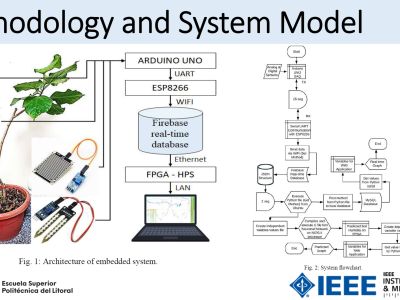VCOM

- Citation Author(s):
- Submitted by:
- Duy-Cat Can
- Last updated:
- DOI:
- 10.21227/nr98-bs82
- Data Format:
 41 views
41 views
- Categories:
- Keywords:
Abstract
The rapid growth of online shopping and e-commerce platforms has led to an explosion of product reviews. These reviews often contain valuable information about users’ opinions on various aspects of the products, including comparisons between different devices. Understanding comparative opinions from product reviews is crucial for manufacturers and consumers alike. Manufacturers can gain insights into the strengths and weaknesses of their products compared to competitors, while consumers can make more informed purchasing decisions based on these comparative insights. To facilitate this process, we propose the “VCOM - Comparative Opinion Mining from Vietnamese Product Reviews” shared task.
The goal of this shared task is to develop natural language processing models that can extract comparative opinions from product reviews. Each review contains comparative sentences expressing opinions on different aspects, comparing them in various ways. Participants are required to develop models that can extract the following information, referred to as a “quintuple,” from comparative sentences:
- Subject: The entity that is the subject of the comparison (e.g., a particular product model).
- Object: The entity being compared to the subject (e.g., another model or a general reference).
- Aspect: The word or phrase about the feature or attribute of the subject and object that is being compared (e.g., battery life, camera quality, performance).
- Predicate: The comparative word or phrase expressing the comparison (e.g., “better than,” “worse than,” “equal to”).
- Comparison Type Label: This label indicates the type of comparison made and can be one of the following categories: ranked comparison (e.g., “better”, “worse”), superlative comparison (e.g., “best”, “worst”), equal comparison (e.g., “same as,” “as good as”), and non-gradable comparison (e.g., “different from,” “unlike”).
Instructions:
Comparative Opinion Mining in Vietnamese Product Reviews
Overview:
This task involves extracting and categorizing comparative information from product review sentences. The key elements in the dataset include the subject, object, aspect, predicate, and label of the comparison, which collectively form a quintuple. Participants are required to identify and categorize these quintuples in a diverse set of documents.
Key Definitions:
1. Subject: The entity that is the subject of the comparison (e.g., a particular product model).
2. Object: The entity being compared to the subject (e.g., another model or a general reference).
3. Aspect: The word or phrase about the feature or attribute of the subject and object that is being compared (e.g., battery life, camera quality, performance).
4. Predicate: The comparative word or phrase expressing the comparison (e.g., “better than,” “worse than,” “equal to”).
5. Label: This label indicates the type of comparison made and can be one of the following categories: ranked comparison (e.g., “better”, “worse”), superlative comparison (e.g., “best”, “worst”), equal comparison (e.g., “same as,” “as good as”), and non-gradable comparison (e.g., “different from,” “unlike”).
6. Quintuple: Information about (subject, object, aspect, predicate, label) extracted from the comparative sentence.
Comparison Type Label:
DIF: Different comparison
EQL: Equal comparison (no significant difference)
SUP+: Positive superlatives
SUP-: Negative superlatives
SUP: Superlatives that do not specify positivity or negativity
COM+: Positive comparison
COM-: Negative comparison
COM: Comparison that does not specify positivity or negativity
Data Structure:
The training dataset comprises 60 different documents, each containing sentences with their corresponding quintuples.
Within each document, sentences featuring comparisons are paired with corresponding sets of quintuples.
Each comparative sentence and its associated quintuples consist of the following elements:
1. Sentence: The textual content of the sentence.
2. Quintuple: Information extracted from the comparative sentence, encoded in JSON format. Each line represents one quintuple.
The quintuple components are represented as lists, with elements in the format: order_in_the_sentence&&word.
Example:
Bên cạnh đó, việc bổ sung cải tiến SoC mới đã giúp hiệu suất Galaxy S23 Ultra vượt trội hơn Galaxy Z Fold 4 với chip Snapdragon 8 Gen 1.
{"subject": ["16&&Galaxy", "17&&S23", "18&&Ultra"], "object": ["22&&Galaxy", "23&&Z", "24&&Fold", "25&&4"], "aspect": ["14&&hiệu", "15&&suất"], "predicate": ["19&&vượt", "20&&trội", "21&&hơn"], "label": "COM+"}
Note: It's important to note that one sentence may have multiple associated quintuples, reflecting different aspects or comparisons within the same sentence.







